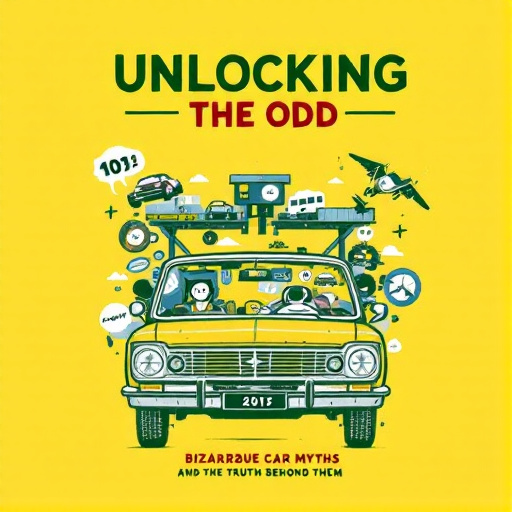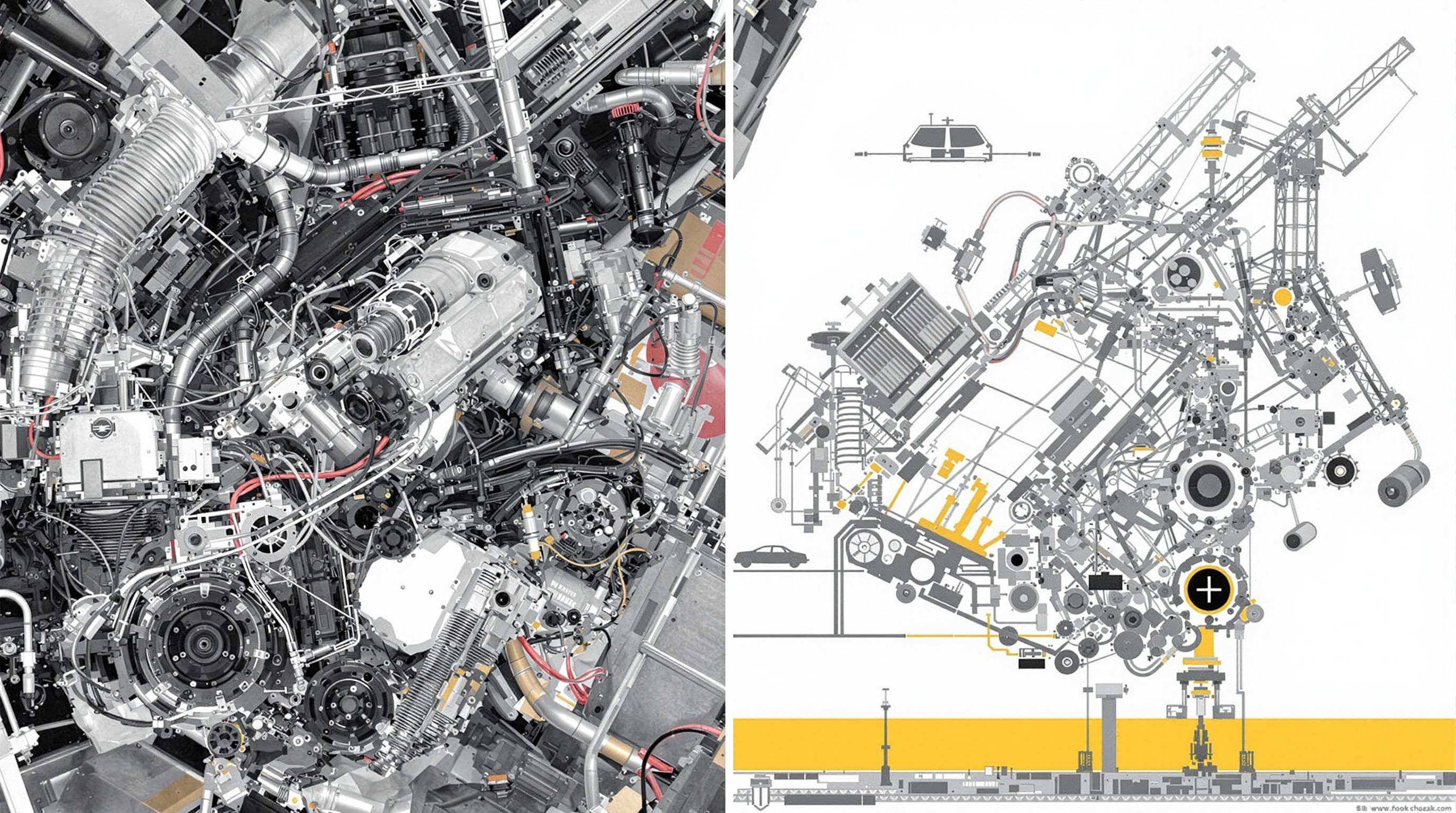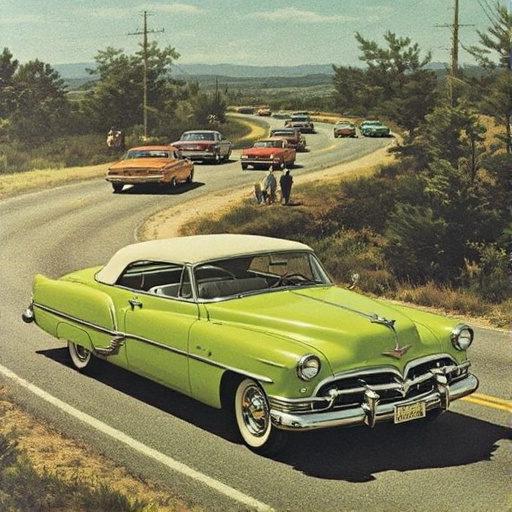Related Articles
- Unveiling the Unthinkable: How Your Social Media Posts Could Impact Your Car Insurance Premiums
- "From Showroom to Social Media: How Dealerships are Becoming Digital Storytellers in 2023"
- "From Showroom to Stream: The Rise of Virtual Reality Test Drives at Dealerships"
- Revving Up Sales: How Virtual Reality is Transforming the Dealership Experience for Shoppers and Sellers Alike
- Selling Experiences: How Dealerships Can Transform into Immersive Automotive Entertainment Hubs
- The Surprising Impact of Your Credit Card Habits on Car Financing: What You Didn't Know!
Unlocking the Odd: Bizarre Car Myths and the Truth Behind Them
Unlocking the Odd: Bizarre Car Myths and the Truth Behind Them
Cars have long been surrounded by a whirlwind of myths, each turning the simple act of driving into an elaborate tapestry of superstition and hearsay. By peeling back these layers, we can uncover both the truths and absurdities that define our automotive beliefs.
Myth #1: Premium Gasoline is Always Better
It’s a common misconception that filling up your tank with premium gasoline will automatically enhance your vehicle’s performance. The truth is, most modern cars are engineered to run perfectly fine on regular unleaded gas.
According to a survey by the American Automobile Association (AAA), the only vehicles that truly benefit from premium fuel are high-performance cars that require higher octane levels, such as some luxury sports cars. For the average driver, opting for premium gas often translates into wasteful spending, as many cars remain unaffected, causing drivers to miss out on potential savings—up to $500 a year! (AAA, 2021)
Myth #2: Waiting Until Your Gas Tank is Empty is Good for Your Engine
Picture this: you’re cruising along, enjoying the open road, but fear grips you—your gas tank reads empty. Many believe that running their vehicle until it’s nearly out of gas is a good way to “clear out the system,” but this is anything but the truth.
In reality, waiting until your tank is empty can be harmful to your car. When your fuel level dips too low, you risk pulling sediment from the bottom of the tank into the fuel system, potentially clogging the fuel filter and causing wear on your fuel pump. Mechanics actually recommend keeping your tank at least a quarter full as a way to keep both your engine and wallet happy.
Myth #3: Using Your Phone While Filling Up is Dangerous
We live in a hyper-connected world, and who doesn’t love scrolling through social media while waiting for their gas tank to fill? Yet, some believe that using your phone while refueling is a fire hazard. As it turns out, this is mostly myth.
While static electricity can indeed ignite gasoline vapors, the chances of it actually happening when using your phone are negligible. According to a study by the National Fire Protection Association (NFPA), the majority of gas station fires are more often attributed to equipment failure, human error, and improper handling of fuel than electronic devices. So, feel free to scroll away—just make sure to keep the nozzle safe and secure!
Myth #4: Warm Up Your Car Before Driving
Following a chilly night, many drivers instinctively turn the ignition and allow their vehicles to warm up for several minutes before setting off. But is this a necessary step, or merely a myth perpetuated by the fear of engine damage?
While it was once recommended for older vehicles, modern engines are designed to warm up faster while they’re in motion. In fact, a study conducted by Stanford University found that idling for extended periods wastes gas and increases emissions, which almost negates any alleged benefits from warming up your vehicle. So, go ahead, hop in, buckle up, and hit the road!
Myth #5: Using Cruise Control Saves Gas
Picture yourself on a possible road trip, windshield wipers set, playlist ready, and the cruise control on. Surely, it would lead to better fuel economy? Not necessarily!
While cruise control can help maintain a steady speed—which is beneficial for fuel efficiency—there are conditions when it’s counterproductive. In hilly terrains, for instance, cruise control may cause the engine to work harder, ultimately leading to increased gas consumption. In fact, a 2019 report from the U.S. Department of Energy explained that varying speeds, particularly on winding highways, often result in better fuel savings than cruise control in certain situations.
Myth #6: You Need to Change Your Oil Every 3,000 Miles
Let’s address the elephant in the room: oil changes. Many mechanics might still promote the age-old rule that oil should be changed every 3,000 miles. The truth is, this has become outdated with advancements in engine design and oil technology.
According to J.D. Power’s 2022 report, many modern vehicles can go as far as 7,500 to 10,000 miles between oil changes, leading to both a time and cost savings for car owners. Adhering to your manufacturer’s recommended maintenance schedule, instead of an arbitrary mileage marker, is the safest bet for a well-functioning vehicle.
Myth #7: A North Wind Carves the Rocks, A South Wind Filches the Gold
There are tales that assert driving your car with the windows down in a fierce wind can somehow harm the vehicle’s structure. Now, while strong winds are best avoided, the myth of fatal structural damage is unfounded.
In essence, while it’s preferable to avoid extreme weather conditions, the chances of significant damage to your vehicle from the wind are minimal. Your car is built to withstand a variety of environmental stressors. Indeed, enjoying a breezy ride can actually make for an exhilarating experience, so let the wind blow through your hair! Just remember to keep it safe and secure.
Myth #8: Buying a New Car is Always a Better Investment
We've been led to believe that investing in a brand-new car is akin to securing a gold mine. However, purchasing a new vehicle comes with its own set of pitfalls that aren't immediately obvious.
The moment you drive a new car off the lot, it depreciates in value by roughly 20%. According to a study from Edmunds, after five years, the average car retains only about 37% of its original value. In contrast, buying a used car can offer significant savings while allowing for a slower depreciation rate. For budget-conscious buyers, a moderately used car often serves as the smarter investment.
Myth #9: Revving the Engine is Necessary for Optimal Performance
Ah, the sound of a revving engine; it’s music to any car enthusiast's ears. But does it genuinely keep your engine in top form? In reality, revving your engine unnecessarily is a manufactured notion without a scientific basis.
Experts from the American Society of Mechanical Engineers assert that revving has little to no benefit and can even cause damage to components over time. This edge that revving enthusiasts believe they gain when busting through the sound barrier is, quite frankly, just a noisy pastime.
Myth #10: Darker Cars Are More Likely to Be Stolen
We continue our exploration with the belief that darker-hued vehicles are more vulnerable to theft than their lighter counterparts. This may sound plausible, but it's far from reality.
In fact, according to the Highway Loss Data Institute (HLDI), the color of your vehicle does not significantly affect its rate of theft; rather, factors such as make, model, and security features play a far more critical role. Whether your car is a vibrant blue or a deep black, being mindful of its security features and parking location is far more vital in avoiding theft.
Conclusion: Car Myths Demystified
As you journey through the winding roads of car maintenance and performance, it becomes evident that many myths may do more harm than good. By unraveling the truths behind these bizarre beliefs, we can enhance our driving experiences and make informed decisions that both protect our investments and save us money.
So, the next time someone tells you to keep your tank on “E” for a clean engine, or insists that premium fuel is the best choice for your sedan, don't be afraid to challenge those assumptions! Together, let’s drive toward a future where knowledge surpasses superstition.



